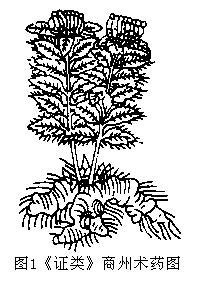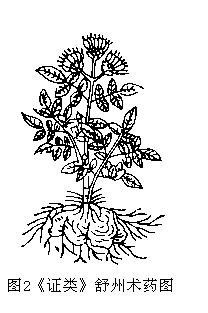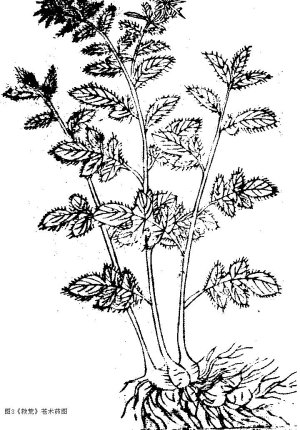| title | White Atractylodes Rhizome, Atractylodes Rhizome |
| release time | 2006/2/25 |
| source | Jade Knock Studio |
| keyword | White Atractylodes Rhizome, Atractylodes Rhizome |
White Atractylodes Rhizome is the dried rhizome of Atractylodes macrocephala Koidz., a plant of the Asteraceae family. Atractylodes Rhizome is the dried rhizome of Atractylodes lancea (Thunb.) DC. or Atractylodes chinensis (DC.) Koidz., also plants of the Asteraceae family. White Atractylodes Rhizome is mainly produced in Pan'an, Xinchang, Shengxian, Dongyang, and Xianju in Zhejiang Province; Shexian, Huangshan, and Ningguo in Anhui Province; and Pingjiang and Enshi in Hunan Province. Additionally, it is cultivated in Hubei, Jiangxi, Fujian, and Sichuan provinces, with Zhejiang having the largest output and the best quality. Among the commercial Atractylodes Rhizome, Atractylodes lancea is mainly produced in Jurong, Nanjing, Zhenjiang, Lishui, and Yixing in Jiangsu Province; Xiangyang and Nanzhang in Hubei Province; and Tongbai in Henan Province, with Jurong in Jiangsu being the most authentic. Atractylodes chinensis is mainly produced in Hebei, Shanxi, and Shaanxi provinces, and also in Liaoning, Jilin, Henan, and Shandong.
Materia medica research suggests that Bencao Jing Jizhu divides Atractylodes into two categories: White Atractylodes Rhizome and Red Atractylodes Rhizome, with the latter being Atractylodes lancea, considered an excellent medicinal product. This variety has been used as the authentic Atractylodes Rhizome to this day, with the Maoshan in Jiangsu being the most authentic source. As for the White Atractylodes Rhizome mentioned by Tao Hong-jing, due to the confusion in the sources of Atractylodes until the Song Dynasty, it cannot be guaranteed to be the same as the White Atractylodes Rhizome used today. According to the morphological and geographical descriptions in Bencao Tujing and the illustration of "Shuzhou Atractylodes," it is close to the current White Atractylodes Rhizome, Atractylodes macrocephala. Since the Song Dynasty, the best quality has been produced in Yuhang, Hangzhou, known as "Yu Atractylodes." As for the other source of Atractylodes Rhizome, Atractylodes chinensis, based on the medicinal illustrations, it is close to the "Shangzhou Atractylodes" depicted in Zheng Lei, and the Atractylodes Rhizome in Jiuhuang Bencao is definitely this variety.
bubble_chart Varietal ExaminationAtractylodes has existed since ancient times. The Shan Hai Jing states: "On Shou Mountain, there are many Atractylodes." Bencao Jing refers to Atractylodes as Shanji, and the Erya also states: "Atractylodes, Shanji." Wu Pu refers to it as Shanji and Tiansu, with "Tiansu" likely being a miswriting of "Tianji," and "Shanji" being a variant of "Shanji." According to Shiji, Jia Yi's biography quotes the "Fu Niao Fu": "Trivial matters are not worth doubting." In this sentence, "Ji" is quoted as "Jie" in the Han Shu, with "Ji" being a common writing of "Ji," as seen in the Yu Pian. Clearly, in early literature, "Atractylodes" is almost always associated with "Ji," hence Guo Pu's annotation in the Erya: "Today's Atractylodes resembles Ji and grows in the mountains." According to ancient texts, "Ji" generally refers to plants of the Cirsium, Cephalanoplos, or Carduus genera of the Asteraceae family, which differ morphologically from the Atractylodes genus that White Atractylodes Rhizome and Atractylodes Rhizome are derived from, but it is clear that they mainly refer to plants of the Asteraceae family.
Atractylodes was regarded by Taoist immortals as a divine medicine. The Bencao Jing states that it "can be used to make decoctions and pills, and long-term consumption can lighten the body, prolong life, and prevent hunger." The Liexian Zhuan records that Juanzi "enjoyed consuming Atractylodes and ingested its essence." The Baopuzi Neipian quotes the Shenyao Jing: "If one desires longevity, one must regularly consume mountain essence." In the Zhengao, edited by Tao Hong-jing, there are numerous records of immortals consuming Atractylodes. Volume 6 includes a passage by Lady Ziwei on the consumption of Atractylodes, which generally states that the medicinal effects of herbs are all deficient compared to Atractylodes, as it not only eliminates disasters and illnesses but also preserves longevity, making it the highest grade of medicine. The text is too lengthy to quote in full, but it is sufficient to show the importance that the Shangqing Taoist school, to which Tao Hong-jing belonged, placed on Atractylodes. The Bencao Jing Jizhu divides Atractylodes into two types: red and white. Tao Hong-jing said: "There are two types of Atractylodes. White Atractylodes Rhizome has large, hairy leaves with branches, and its roots are sweet with little sap, suitable for making pills and powders. Red Atractylodes has fine leaves without branches, and its roots are small, bitter, and rich in sap, suitable for making decoctions. In the past, Liu Juan-zi extracted its essence and made it into pills, called Shouzhong Jin Pills, which could prolong life. The Atractylodes from the eastern region is large but lacks strong potency and is not suitable for use. Nowadays, what is sold in the market is often coated with rice flour to make it appear white, which is not natural, and should be scraped off before use." Based on Tao's description and the production areas, it is clear that red Atractylodes is what is now known as Atractylodes lancea. However, whether the White Atractylodes Rhizome he referred to is the same as the modern Atractylodes macrocephala is still questionable. Instead, the large but mild "eastern Atractylodes" he mentioned might be the White Atractylodes Rhizome produced in the Dongyang area of Zhejiang. Unlike the modern use of White Atractylodes Rhizome for tonification and Atractylodes Rhizome for draining dampness, the Taoist immortals of that time seemed to value Atractylodes Rhizome more highly, for the following reasons:
- The "Zhen Gao" Volume 6 mentions in the narrative of Lady Ziwei's use of Atractylodes: "The qi of Atractylodes can suppress ghostly influences, and its smoke can subdue evil nodes." It also states: "Moreover, the use of Atractylodes qi is essential in these times; in an era of many diseases, it is appropriate to use it." The so-called "its smoke can subdue evil nodes" and the emphasis on "Atractylodes qi" likely refer to the air-disinfecting effects of Atractylodes Rhizome smoke, which has been confirmed by modern research.
- As Tao mentioned, red Atractylodes, due to its high resin content, is suitable for making decoctions. Tao Hong-jing once gifted Yu Jianwu with Atractylodes decoction and steamed Atractylodes. According to his "Reply to Tao Yin-ju's Gift of Atractylodes Decoction," it says: "Its taste surpasses that of golden syrup, its fragrance exceeds that of Yuye (EX-HN13), enough to make the glossy ganoderma feel ashamed and the cinnabar blush like the hibiscus, sitting to prolong life, deeply grateful and indebted." What he used should be red Atractylodes (i.e., Mao Atractylodes Rhizome).
- Mount Mao is the main production area of Mao Atractylodes Rhizome. According to Volume 11 of "Zhen Gao" annotated by Tao: "(The Jijin Ridge of Mount Mao) the mountain produces good Atractylodes and various other herbs." Also, according to Yu Jianwu's "Reply to Tao Yin-ju's Gift of Atractylodes Decoction," it says: "Green leaves sprout, growing beside the first peak, purple flowers display their colors, emerging from beneath Zheng Rock." This shows that the Atractylodes decoction and steamed Atractylodes made by Tao Hong-jing were all sourced from Mount Mao, undoubtedly Mao Atractylodes Rhizome.
- Sun Simiao's "Qianjin Fang" used Atractylodes without distinguishing between Cang and White;
- In the Song dynasty, some physicians, influenced by Tao Hong-jing, still considered Atractylodes Rhizome as the genuine Atractylodes, such as the "Three Categories of Disease Cause and Extreme One Disease Prescription Theory" which includes the Red Atractylodes Pill (in "Puji Fang" referred to as Red Atractylodes Powder, said to be from the Wei's prescription).
- The Song dynasty placed more emphasis on White Atractylodes Rhizome, which is even evidenced in the Taoist text "Yunji Qiqian" Zhongdu (LR6). This book contains 12 prescriptions using White Atractylodes Rhizome, regarded as a supplement for longevity and immortality, such as the Laojun Longevity Powder, without mentioning Atractylodes Rhizome. The only instance of its use is found in Volume 71's Ghost-Killing Pill, named White Red Atractylodes.



From the above discussion, it can be seen that since Tao Hong-jing, Atractylodes Rhizome (Red Atractylodes) has not undergone significant changes in variety due to its primary production in Maoshan. Although the "Zheng Lei" depicts "Shangzhou Atractylodes," which might be today's Northern Atractylodes Rhizome, it is unclear whether it was used as Atractylodes Rhizome or White Atractylodes Rhizome. By the Ming Dynasty, this Northern Atractylodes Rhizome, Atractylodes chinensis, officially became one of the sources of Atractylodes Rhizome, as evidenced by the text and illustrations in the Jiuhuang Bencao entry on Atractylodes Rhizome: "The seedlings are light green, two to three feet high, with stems resembling those of wormwood. The leaves grow along the stem, with the upper leaves resembling pear leaves and the lower leaves having three to five lobes, all with serrated edges and small thorns. The flowers are purple-blue, similar to thistle flowers, and some have yellow-white flowers. The roots are long, finger-sized, and plump, with a dark tea-brown skin." The "Jiuhuang" specifically mentions that the leaves of Atractylodes Rhizome grow along the stem, and according to the medicinal illustration (Figure 3), the leaves are narrowly ovate with five deep lobes, confirming it as Atractylodes chinensis rather than Atractylodes lancea.
In the Ming Dynasty, the variety of White Atractylodes Rhizome was also unified as Atractylodes macrocephala. Moreover, the Bencao Gangmu specifically mentions the cultivation of White Atractylodes Rhizome. Li Shizhen states: "White Atractylodes Rhizome, also known as Baiji, is found in Wu and Yue regions. People often take the roots to plant, and they become dense within a year. The tender seedlings are edible, the leaves are slightly larger and hairy, and the roots are finger-sized, resembling drumsticks, with some as large as fists."
It can be largely confirmed that from the Ming Dynasty onwards, the varieties of White Atractylodes Rhizome and Atractylodes Rhizome became stable, with no further confusion. It should be noted that the classification of Atractylodes Rhizome and White Atractylodes Rhizome in the "Pin Hui Jing Yao" mainly follows books like Bencao Yanyi and Tangye Bencao, without significant innovation. However, since the illustrations in this book mainly follow the "Zheng Lei," Liu Wentai divided the seven illustrations of Atractylodes in the "Zheng Lei" into two categories, labeling the Shuzhou and Yuezhou Atractylodes as White Atractylodes Rhizome and altering the original illustration of Shuzhou Atractylodes' capitulum to resemble a raceme, making it seem incongruous. The remaining five types of Atractylodes, namely Jingmenjun, Shezhou, Shizhou, Qizhou, and Shangzhou Atractylodes, were labeled as Atractylodes Rhizome, which could easily create the impression of confusion in the varieties of Atractylodes Rhizome at that time.
bubble_chart Historical Evolution of Authentic Production Areas
Before the Bencao Jing Jizhu, Atractylodes was not divided into Red and White. The text states: "It grows in the valleys of Zhengshan, Hanzhong, and Nanzheng." The "Fan Zi Ji Ran" says: "Atractylodes comes from Sanfu, and the yellow-white ones are good." The "Southern Grass and Trees Record" mentions that Qiligia is "produced along the coast." Due to the unclear variety, these references have no value.
Undoubtedly, the Maoshan Atractylodes Rhizome used today has the longest history and the best quality from Jiangsu's Maoshan. As previously quoted in the "Zhen Gao," Tao Hongjing said: "It is found everywhere today, but the best comes from Jiangshan (now Zijin Mountain in Nanjing, Jiangsu), Baishan (30 miles east of Jiangning County, Jiangsu, connected to Jiangshan), and Maoshan (now in Jurong County, Jiangsu)." The "Maoshan Zhi" from the Yuan Tianli period, Volume 19, mentions the Atractylodes of Maoshan, and the "Jinling New Records" from the Yuan Zhida period, Volume 7, states the annual tribute of "200 catties of Maoshan Atractylodes Rhizome." Subsequent records are continuous, making it a valuable authentic variety worth developing and preserving.
As for Northern Atractylodes Rhizome, the Bencao Tujing mentions that "the best comes from Songshan and Maoshan." The Songshan variety might be Northern Atractylodes Rhizome, but this is not certain. The "Zheng Lei" illustration of "Shangzhou (now Shang County, Shaanxi)" closely resembles Northern Atractylodes Rhizome, but it is uncertain whether it was used as Atractylodes Rhizome at that time. The earliest clear record of Northern Atractylodes Rhizome should be from the "Jiuhuang," with Henan as its main production area.
The "Tu Jing" entry on White Atractylodes Rhizome mentions production areas close to today's varieties, mainly in Zhejiang and Anhui. Su Song states: "Today, White Atractylodes Rhizome grows on high grounds in Hangzhou (now Yuhang, Zhejiang), Yuezhou (now Shaoxing, Zhejiang), Shuzhou (now Qianshan, Anhui), and Xuanzhou (now Xuancheng, Anhui)."
The production of White Atractylodes Rhizome in Zhejiang is extensively documented in the local chronicles of the Song Dynasty. The "Jiading Chicheng Zhi" Volume 36 states: "Atractylodes, the white ones have large leaves with hair, sweet but less resinous, while the red ones are the opposite. Guan Xiu's poem: 'Black soil produces red Atractylodes,' refers to Tiantai. Du Guangting's poem 'Kongming Cave': 'Fragrant Atractylodes and Solomon's Seal welcome the wind,' refers to Huangyan." The "Qiandao Lin'an Zhi" Volume 2 mentions the production of White Atractylodes Rhizome. The "Huiji Zhi" Volume 9 notes that Shigu Mountain is abundant in Solomonseal Rhizome and White Atractylodes Rhizome. The "Haiyan Ganshui Zhi" Volume 6 lists White Atractylodes Rhizome among its medicinal products. Today, the most authentic White Atractylodes Rhizome from Yuqian, Zhejiang (now part of Lin'an County, Hangzhou City), is recorded in the "Xianchun Lin'an Zhi" Volume 58. Later, the "Pinhui Jingyao" mentions under the authentic items of White Atractylodes Rhizome that "the best comes from Yuqian, Hangzhou." The Wanli "Hangzhou Fu Zhi" also states: "White Atractylodes Rhizome produced in Yuqian is considered the best, known as Yu Atractylodes."
It should be noted that although White Atractylodes Rhizome was cultivated as early as the Ming Dynasty, medical scholars from the Ming and Qing dynasties up to the Republic of China period all believed that wild varieties were superior to cultivated ones. For example, the Bencao Mengquan states: "Zhejiang Atractylodes, commonly known as Yuntou Atractylodes, is grown in flat lands and is quite plump due to fertilization. She Atractylodes, commonly known as Goutou Atractylodes, is produced in deep valleys and, although smaller, is full of earth energy." The Bencao Gangmu Shiyi, in its entry on Atractylodes, says: "The wild Atractylodes produced in Qian is the best, especially those from He Mountain behind the county seat, but they are hard to come by now." It also quotes Mao Yi: "Those produced in Huizhou are all cultivated Atractylodes, commonly known as Fen Atractylodes, which are large due to fertilization, plump but without the crane's neck. The wild ones are called Tiansheng Atractylodes, small in size with a long crane's neck, and have Cinnabar spots inside. Those with fibrous roots are especially good, as they are rich in earth energy. Yu Atractylodes are also wild, produced in Qian, and those grown on the dragon vein soil in the county seat have spots inside that truly resemble Cinnabar, bright red like spilled blood, with a crane's neck and meaty roots, and a fragrant aroma when dried. Those produced elsewhere may have no spots and be pure white, or have yellow spots, but are generally inferior to those produced on the dragon vein soil." The Zengding Weiyao Tiaobian mentions: "There is also winter Atractylodes transplanted to Qian, known as Zhong Atractylodes, which are very large, with the heaviest weighing over ten taels and the smaller ones five to six taels. They have yellow skin and white flesh, no halos, and also have Cinnabar spots. They taste both sweet and spicy, and are currently sold in markets as Yu Atractylodes, but they are not very good." It seems that while White Atractylodes Rhizome from Yuqian, Zhejiang is considered authentic, the quality evaluation between wild and cultivated varieties still requires further investigation.
bubble_chart Other Related Items







